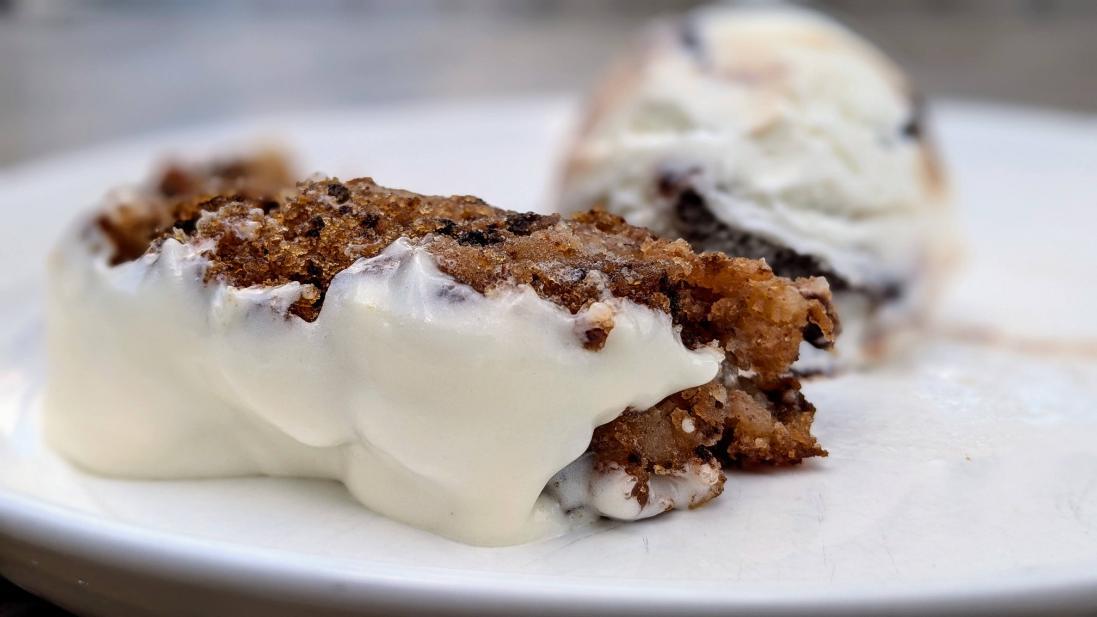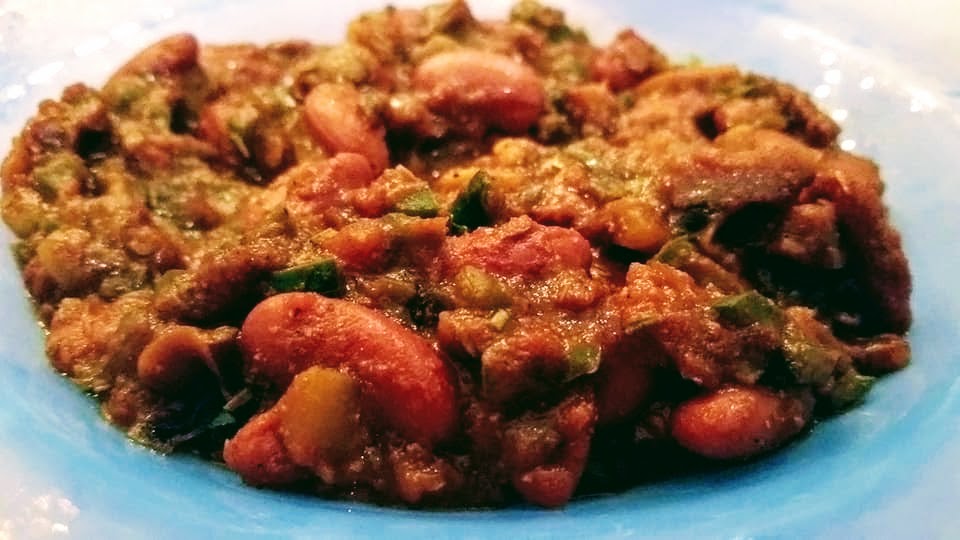Pineapples are known for symbolizing hospitality, friendship, and generosity. So it would make perfect sense to welcome guests with the delicious treat of pineapple upside down cake.
The Pineapple Upside Down Cake is making a rebound in popularity that it enjoyed in the 1950s and 1960s. It should be no surprise since it is delicious, easy to make and still has an inviting visual impact.
The First Recorded Recipe For Pineapple Upside Down Cake
In Fashionable Food: Seven Decades of Food Fads (1995), Sylvia Lovegren traces pineapple upside-down cake to a 1924 Seattle fund-raising cookbook. And while researching the history of pineapple cake, I ran across this ad from the Pineapple Growers Association from 1955.

The idea of cooking a cake upside down, is an old technique that started centuries ago when cakes were cooked in cast iron skillets. It was easy to add fruit and sugar in the bottom of the pan with a simple cake batter on top and place it over the fire to cook.
According to historians, the term “upside down cake” first began appearing in the late 1800s. Prior to that time, this type of cake was referred to as spider or skillet cakes because they were cooked in a cast iron pan on top of the stove. Then flipping it over onto a plate was a natural way to show the pretty fruit and let it run into the cake.
The first upside-down cakes were not even made with pineapple, but with seasonal fruits such as apples and cherries, as the canned pineapple had not been invented yet. Canned pineapple manufacturing didn’t begin until 1901 when Jim Dole established the Hawaiian Pineapple Company (now Dole Company) and began producing and marketing mass quantities of canned pineapple.
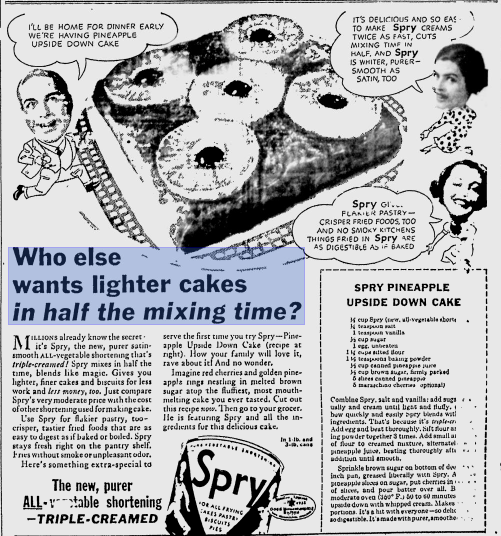
Cultivating the Fruit for Pineapple Upside Down Cake
In the wild, pineapples are pollinated primarily by hummingbirds.
The ovaries develop into berries, which coalesce into a large, compact, multiple fruit. The fruit of a pineapple is usually arranged in two interlocking helices, often with 8 in one direction and 13 in the other, each being a Fibonacci number.
According to Wikipedia, the pineapple is indigenous to South America, where it has been cultivated for many centuries. The wild plant originated from the Paraná–Paraguay River drainages between southern Brazil and Paraguay. Archaeological evidence of cultivation is found as far back as 1200 – 800 BC (3200-2800 BP) in Peru, and 200BC – AD700 (2200-1300 BP) in Mexico, where it was cultivated by the Mayas and the Aztecs.
Bukidnon is a highland paradise in the heart of Mindanao. It is home to the world’s biggest pineapple plantation boasting a classic golf course dating back to 1928.
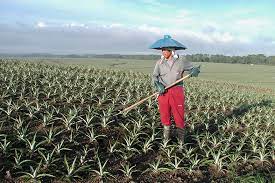
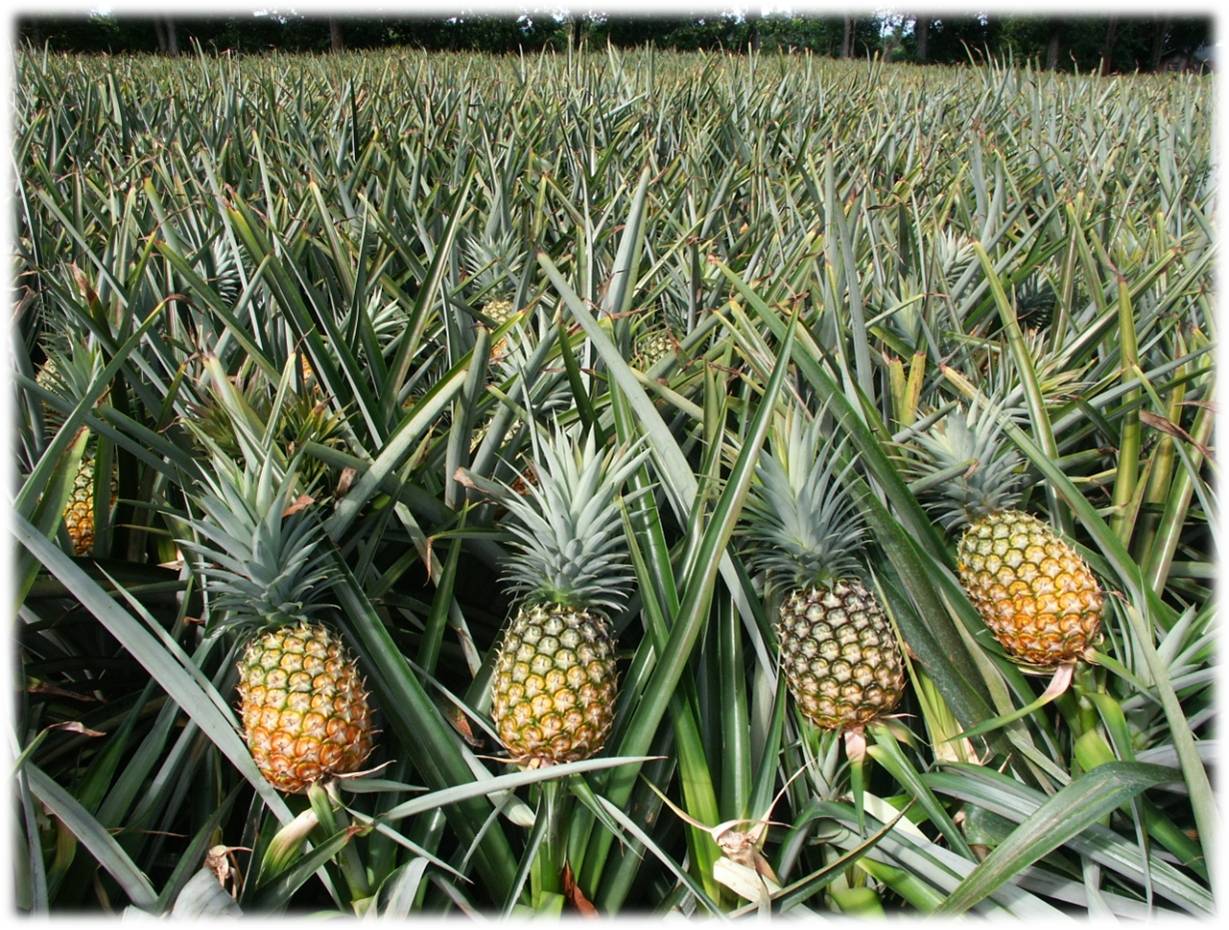
Nutritional Information
Raw pineapple pulp is 86% water, 13% carbohydrates, 0.5% protein, and contains negligible fat (table). In a 100-gram reference amount, raw pineapple supplies 209 kilojoules (50 kilocalories) of food energy, and is a rich source of manganese (44% Daily Value, DV) and vitamin C (58% DV), but otherwise contains no micronutrients in significant amounts.
Pineapple Upside Down Cake Popularity
The idea of the pineapple soon blossomed after 1911, when one of James Dole’s engineers invented a machine to cut his pineapples into nice rings. Soon the convenient and pretty rings were used in this age old technique of the skillet cake. The invention of the maraschino cherry added the necessary color needed to make this cake stunning.

In 1925, the Hawaiian Pineapple Company sponsored a contest calling for pineapple recipes with judges from the Fannie Farmer’s School, Good Housekeeping, and McCall’s Magazine on the judging panel. It is said that 2,500 of the 60,000 submissions were recipes for pineapple upside-down cake. The company decided to run an ad about the flood of pineapple upside-down cake recipes it had received, and the cake’s popularity increased! And as they say, “The rest was history!”
Making This Dairy-Free Vegan Pineapple Upside Down Cake Recipe
Let me begin by saying that I love pineapple upside down cake that’s been made in a cast-iron skillet. The reason is because heavy bottom pans tend not to burn the butter. They have a way of distributing even heat throughout the bottom and sides of the pan. This is a bonus when trying to caramelize the sugars. I also love the overall look of a finished pineapple upside down cake. It brings back memories of living in the Philippines when I was young. This was a regular dessert.
This recipe can be made in a skillet pan or bake it in the oven. I did something a little different this time. I baked the recipe in 6 individual ramekins. Why? I knew if I had an entire cake in front of me, it would be gone by the next day. The ramekin gave me a sense of portion control. Secondly, I wanted to see if the cake would caramelize as well in ramekins. More caramelization = better dessert! Finally, I thought it may be better for photographs.
Note: The ingredients in the recipe will accommodate a regular 9″ Pyrex pie dish or a 9″ cast iron skillet. I chose 6 ramekins.
Putting It All Together
I started by peeling, coring and slicing a fresh pineapple (you can use canned pineapple rings or crushed pineapple too). Melt plant butter and poured it into the bottom of each ramekin. Quickly sprinkle brown sugar at the bottom of each.
Now place a maraschino cherry in the bottom center of each ramekin. Unfortunately, the pineapple rings were just a little too big for the ramekins I had. No problem. I diced the pineapple rings and sprinkled them around the cherries.
Next, pour the batter and fill each ramekin to within about 3/4″ from the top (about 1/2 cup of batter). Place all 6 ramekins on a cookie sheet. Place them in the oven at 350 degrees on a lower shelf. I prefer the lower shelf for these because it caramelizes the bottom a little better.
Once baked, pull the ramekins out of the oven and let them cool for about 10 minutes. I slide a knife blade on the inside of the ramekin edge to loosen the cake from the wall. Cover the ramekin with a plate or saucer, then quickly flip it over. The cake should slide out of the ramekin. Let the remaining syrup drizzle over the top. Repeat for all the remaining ramekins. Serve warm.
Enjoy!
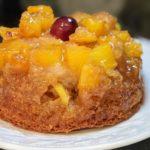
Pineapple Upside Down Cake Recipe
DESCRIPTION
INGREDIENTS
- Ingredients
- For the Topping:
- ¼ cup Vegan Butter (56g Melted)
- ½ cup Light Brown Sugar (100g)
- 6 Slices Pineapple
- 6 Maraschino Cherries
- For the Cake:
- 1 ¾ cups All Purpose Flour (220g)
- 1 cup White Granulated Sugar (200g)
- 1 tsp Baking Soda
- ½ tsp Salt
- ¾ cup Macadamia Milk (180ml or other non-dairy milk)
- ¼ cup Pineapple Juice
- 2 tsp Vanilla Extract
- ⅓ cup Canola Oil
- 1 Tbsp Apple Cider Vinegar
INSTRUCTIONS
- Instructions
- Spray 6 ramekins with non-stick spray.
- Melt the vegan butter and then pour 1 Tbsp. into the bottom of the each ramekin and spread it around so it lines the bottom evenly.
- Sprinkle about a tsp. of brown sugar over the melted butter and spread it around evenly.
- Then place a cherry in the center of each ramekin. Fill around the cherry with one sliced of diced pineapple in a single layer.
- Set the prepared ramekins aside while you prepare the cake batter.
- Preheat the oven to 350°F (180°C).
- Sift the flour into a mixing bowl and add all the dry ingredients together: the white sugar, baking soda and salt and mix together.
- Then add in the wet ingredients: macadamia milk, pineapple juice, vanilla, oil and vinegar and whisk together with a hand whisk until just combined.
- Pour about 1/2 cup of batter into each ramekin filling them to about 1/2" from the top. Smooth out with the back of a spoon.
- Place into the oven and bake for 30 minutes. Prick with a toothpick or fork to test if done. If clean, then the cakes are done. If not, bake for 5 more minutes and check again. Repeat if needed.
- Let the cakes cool for 10 minutes before inverting them onto saucer plates.
- To flip them, cover the ramekin with a saucer plate and then flip it so that the ramekin is upside down on top of the plate. Let it sit for a few seconds for the caramelized brown sugar to run down over the sides of the cake, and then lift the ramekin off


